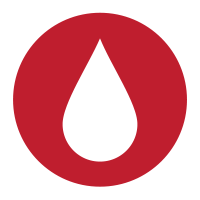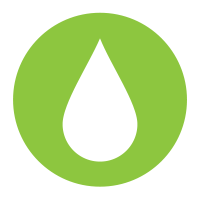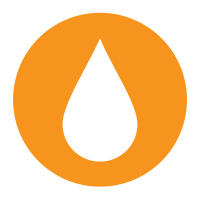I want to...
Current filter: Most popular
A to Z
Apply for a job
Biosecurity
Consents
Consultation
Contact Us
Environmental Data
Farmers Hub
Fix it or Report it
Information Request
Join an Event
Leasehold Land
Meetings
Rates
Water Metering
Have Your Say
Taipo Sub-Catchment Dashboard
The Regional Council is working with farmers and community groups to improve the health of our local rivers, lakes and estuaries. This dashboard will help you learn about the water quality issues in the Taipo Sub-Catchment of the Ahuriri Catchment.
Sub-Catchment Overview
We will update this section with summary information soon. If you have information about water quality, ecosystem health, or mana whenua/hapū knowledge that you would like to be included, please contact us info@hbrc.govt.nz.
Click here to find out what you can do to improve water quality in your sub-catchment.
Fast facts: Ahuriri Catchment
Catchment size: 14,572 haMain land use types:
 Sheep and Beef (4,226 ha; 29%)
Sheep and Beef (4,226 ha; 29%) Built-up Area (settlement) (1,748 ha; 12%)
Built-up Area (settlement) (1,748 ha; 12%) Beef (1,457 ha; 10%)
Beef (1,457 ha; 10%) Short-rotation Cropland (1,311 ha; 9%)
Short-rotation Cropland (1,311 ha; 9%)Total native landcover: 339 ha (2%)
Highly erodible land: 378 ha (3%)
Estimated population: 53,900 people
Key water bodies: Ahuriri Estuary, Taipo Stream
Protected areas: View full list of protected areas
Number of QEII covenants: 5 (388 ha; 3%)
Fast facts: Taipo Sub-Catchment
Sub-catchment size: 1,260 ha (9% of Ahuriri Catchment)Main land use types:
 Built-up Area (settlement) (329 ha; 26%)
Built-up Area (settlement) (329 ha; 26%) Sheep and Beef (251 ha; 20%)
Sheep and Beef (251 ha; 20%) Transport Infrastructure (172 ha; 14%)
Transport Infrastructure (172 ha; 14%) Lifestyle Block (162 ha; 13%)
Lifestyle Block (162 ha; 13%)Total native landcover: 13 ha (1% of sub-catchment area)
Highly erodible land: 0 ha (0% of sub-catchment area)
Estimated population: 9,123 people
Key water bodies: Taipo Stream
Protected areas: Ahuriri Estuary Conservation Area, Otatara Pa Historic Reserve
Number of QEII covenants: 0 (0 ha; 0%)
This information was last updated in August 2022.
Figures are estimates calculated from HBRC and statistical demographic data.
Water quality in the Taipo Sub-Catchment
The data below is the past five years of data collected by HBRC, for the Taipo Stream at Church Road monitoring site. It covers the most recent past five hydrological years, which start in July and finish the following June. The data and graphs are updated annually once we have processed all of the data from the new hydrological year. E. coli, DIN, DRP and clarity data collected monthly, macroinvertebrates measured annually.
We have used the National Objectives Framework (NOF; more information below) to determine what coloured band a monitoring site falls into for each of the below attributes. The attribute bands range from A (good), B, C, or D (poor).
The dotted black line represents the statistic used to determine the NOF band (median or 95th percentile, calculated over five years). The coloured band that the black line sits in corresponds to its NOF band. Some sites and attributes do not have enough data for a NOF band. These sites and attributes show up on the map and icons as grey. The data that we do have are visible in the graphs below, and will be given a NOF band when we have enough data. They therefore will not have a black line on the graphs that shows what NOF band they are.
Where there is some ambiguity, check the coloured teardrop icon for that attribute. The colour of the teardrop corresponds to the NOF band.
Latest Monitoring Data - Taipo Stream at Church Road
Click each of the sections below to see the data and learn more. Further detail can be found below in more information about the dashboards.
KEY:
 Below guideline value
Below guideline value
 Above guideline value
Above guideline value
 Checked Data
Checked Data
 Unchecked Data
Unchecked Data
Most recent 5-year median: 0.2937mg/L
The median DIN value in the Taipo sub-catchment is below guideline value, which means it is not deemed to be at increased risk of plant and algal growth.
Dissolved Inorganic Nitrogen (DIN) refers to the types of nitrogen that are used by plants and algae to grow. DIN includes ammonia, nitrate and nitrite. DIN is essential for plant growth, and algae and plants are part of a natural system, but elevated levels can lead to excessive plant and algal growth with associated problems in waterways. High levels of DIN can also affect stream ecology and can even be toxic to humans and livestock.
Learn more about the bands...

KEY:
 A
A
 B
B
 C
C
 D
D
 Checked Data
Checked Data
 Unchecked Data
Unchecked Data
Most recent 5-year median: 0.3mg/L
The Taipo sub-catchment is in the Band D for DRP, which means DRP levels are substantially elevated. There is likely excessive plant and algal growth, significant changes in macroinvertebrate and fish communities, and loss of taxa that are sensitive to low levels of oxygen.
Dissolved Reactive Phosphorous (DRP) is the only form of phosphorous used by aquatic plants and algae to grow. Phosphorous is essential for plant growth, but elevated levels can lead to excessive plant or algal growth with associated problems in waterways.
Phosphorous often enters waterways attached to sediment (or soil) that is washed off the land. Sources of phosphorous to streams and rivers include fertiliser, animal waste, and soil disturbance leading to sediment entering the stream.
The black line below represents the five-year median value. The coloured band which the black line sits in indicates what NOF band the site is in. Five years of data are required for a site to be given a NOF band, so any sites with insufficient data (grey) do not have NOF bands. Sites without a NOF band will not have a black line on the graph.

KEY:
 A
A
 B
B
 C
C
 D
D
 Checked Data
Checked Data
 Unchecked Data
Unchecked Data
E. coli (Escherichia coli) is a type of faecal bacteria commonly found in the gut of warm-blooded animals and people. It is used as an indicator of faecal contamination in waterways. Water with high levels of E. coli is not recommended for drinking or swimming in, as there is a chance of getting sick. Not all strains of E. coli are dangerous; however, high concentrations suggest that other pathogens may be present.
E. coli can enter waterways through wastewater discharges, animal waste, bird droppings, and stormwater run-off. When high volumes of sediment (soil) are washed into waterways by the rain, E. coli and other contaminants that attach to sediment, are also along for the ride. High river flows are therefore associated with increased levels of sediment, E. coli, and other contaminants.
Our science team monitors E. coli levels at popular swimming spots over summer, so you can check if it's safe to swim where you like to go. Click here to check whether it's 'good to go' at popular swimming spots in Hawke's Bay and learn more about E. coli and toxic algae.
Learn more about the bands...


KEY:
 A
A
 B
B
 C
C
 D
D
 Checked Data
Checked Data
 Unchecked Data
Unchecked Data
Visual water clarity refers to how clear the water is. Reduced water clarity is usually caused by increased levels of suspended sediment (soil particles) or algae in the water. The National Objectives Framework (NOF) uses visual clarity as a measure for suspended sediment.
Erosion and runoff are natural process that cause sediment (soil particles) to enter waterways. However, when soil is exposed or made mobile, increased levels of sediment are generated and travel to rivers and streams. When sediment enters waterways, it also acts as a carrier for phosphorous and potentially harmful pathogens such as E. coli.
Increased sediment in waterways affects both water quality and habitat. Sediment can fill in the spaces in between rocks and gravel on river/stream bottoms, reducing habitat available for fish and macroinvertebrates. Aquatic life can also be smothered by high levels of sediment, as the sediment particles can clog their gills and limit their oxygen uptake.
Poor visual clarity can decrease the amount of light reaching the bottom of the waterway, which can potentially limit plant growth. Murky water is also unsafe for swimming in.
The black line represents the five-year median value. The coloured band which the black line sits in indicates what NOF band the site is in. Five years of data are required for a site to be given a NOF band, so any sites with insufficient data (grey) do not have NOF bands. Sites without a NOF band will not have a black line on the graph.

KEY:
 A
A
 B
B
 C
C
 D
D
Most recent 5-year median: 56
The Taipo sub-catchment is in the Band D for macroinvertebrates, which means the macroinvertebrate community indicates that there is severe organic pollution or nutrient enrichment in the waterway. The community is likely largely composed of taxa that are insensitive to inorganic pollution or nutrient level elevation.
Macroinvertebrates are critters that are large (macro) enough to be seen with the naked eye and lack a backbone (invertebrate). They include the larvae of insects, snails, worms, crustaceans, and koura (crayfish), amongst others.
Aquatic macroinvertebrate communities are at the centre of aquatic food webs and link the energy of the sun to fish and birds. Their health depends on a combination of water quality, habitat, and climate factors.
HBRC reports on macroinvertebrates by calculating the Macroinvertebrate Community Index (MCI). The MCI assigns a score to each species (1 to 10). Higher number scores represent high sensitivity to organic pollution, and low numbers represent low sensitivity. The MCI then calculates the average of all of the species’ scores, to give one overall number for the site. High MCI scores indicate that there are many different species of macroinvertebrates present, including sensitive ones. High MCI scores generally reflect healthier ecosystems.
The graph below shows MCI and its median. The black line represents the five-year median value. The coloured band where the black line sits indicates what NOF band the site sits in. Five years of data are required for a site to be given a NOF band, so any sites with insufficient data (grey) do not have NOF bands. Sites without a NOF band will not have a black line on the graph.
The NOF band for macroinvertebrates includes the MCI and Quantitative Macroinvertebrate Community Index (QMCI). On this dashboard HBRC just reports on MCI, using the NOF banding.

The banding for the attributes is based on the National Objectives Framework (NOF), outlined in the National Policy Statement for Freshwater Management, 2020 (NPSFM 2020). You can learn more about the NOF below. All the data in these dashboards meets HBRC quality assurance and reporting standards.
Nitrogen (DIN) is not included as an attribute in the NOF, so for these dashboards we have used the Australian and New Zealand Environment and Conservation Council (ANZECC) Guidelines for Fresh and Marine Water Quality (2000). The guidelines distinguish between upland and lowland streams and set a guideline DIN value for each. Click here to learn more about the ANZECC guidelines.
The government sets out a ‘National Objectives Framework’ (NOF) directing how councils should set objectives, policies and rules about fresh water in their regional plans.
Essentially, councils need to understand the current state of the waterways in their region and how communities value these waterways. Councils then need to determine what goals should be set for the future, based on economic, social, cultural and economic factors. Waterways that fall below the National Bottom Line for any attributes in the NOF are deemed to be degraded, and must be improved. Further degradation of any waterways should be prevented.
NOF defines a number of compulsory attributes that measure ecosystem health using bands. Attribute bands range from A (good), B, C, or D (poor). In the case of E. coli, bands range from A (good) to E (poor).
Attributes require five years of data because of the significant seasonal variation in contaminant levels and stream characteristics through the year. This period gives an accurate overall picture of the state of the waterway.
E. coli, DIN, DRP and clarity data are collected monthly, and macroinvertebrates are measured annually.
The dotted black line represents the statistic used to determine the NOF band (median or 95th percentile, calculated over five years). The coloured band that the black line sits in corresponds to its NOF band.
Where there is some ambiguity, check the coloured teardrop icon for that attribute. The colour of the teardrop corresponds to the NOF band.
- Median: Used to understand where the midpoint of the data is.
- 95th percentile: The datapoint where 95% of the other datapoints are lower than it, and 5% are higher than it. The 95th percentile is used to understand how high the data gets.
As well as causing direct issues in waterways, sediment (soil particles) can carry phosphorus and pathogens like E. coli with it. Processes and practices that expose soil, or increase its mobility, generate increased levels of sediment. This sediment gets washed into rivers and streams by surface runoff.
Most sediment, phosphorous, and E. coli losses come from a small part of the landscape, called critical source areas. These places may include areas of erosion, stock yards, tracks, races and intensively grazed areas. Other sources of phosphorous and E. coli in streams include fertiliser and animal waste.
The key to preventing these contaminants from entering waterways is to keep your soil where it is, reduce runoff to waterways, and to protect critical source areas.
These are key actions that will reduce the amount of sediment, E. coli and phosphorus entering waterways, to influence better water quality outcomes:
-
Exclude stock from the margins and beds of permanent waterways, and from critical source areas. We recommend a five-metre setback from lakes, streams, rivers and creeks. Learn more about stock exclusion, including future exclusion requirements for some waterways on our page: Stock Exclusion.
-
Maintain adequate pasture covers on soils vulnerable to sheet erosion.
-
Protect your soil. Plan and undertake a programme of tree planting to reduce erosion on vulnerable hill country.
-
Strategically break feed winter crops towards waterways, rather than away from them, and do so in parallel to the waterway. This will help to maintain an intercepting wedge of vegetation to catch sediment heading towards the waterways, for as long as possible. All winter forage cropping must have a minimum five-metre buffer from any waterway. More information about regulations is available on our page: Intensive Winter Grazing.
-
Use minimum or no-till cultivation where possible, and cultivate across slope rather than up and down. Maintain grass buffers between cultivated paddocks and waterways.
-
Manage the runoff from laneways, races and yards where soil and high concentrations of animal excreta are readily mobilised.
-
Use sediment traps and bunds to filter and collect sediment in runoff. You can then redistribute this on farm.
-
Test your soil before you apply phosphate fertilisers, to prevent excessive applications. Maintain Olsen P at no more than the optimum range.
As well as supporting nuisance plant and algae growth, high levels of dissolved inorganic nitrogen (DIN) can affect stream ecology and can even be toxic to humans and livestock. Unlike phosphorous which attaches itself to soil particles, nitrate generally leaches through the soil and enters streams and waterways via groundwater. The key to minimising nitrogen loss to waterways, is to manage conditions in your paddocks so that excess nitrogen cannot be washed through the soil profile and into freshwater systems.
These are key actions that will reduce the amount of nitrogen entering waterways, to influence better water quality outcomes:
- Budget nutrient use, soil test regularly at block level, and if needed engage specialist help to ensure efficient and effective nutrient application. Excess nitrogen use is costly and can drain through the soil profile and into waterways.
- Apply 'little and often' with split dressings of no more than 50 kgN/ha.
- Avoid the application of nitrogen or effluent when plants are not actively growing (i.e. between May and August), or during periods of high risk (I.e. when heavy rain is forecast, or when soils are saturated). This will reduce excess nitrogen in the soil at times when it is likely to be washed away.
- Retain or enhance shallow, boggy wetlands. Ecosystems like wetlands have very low levels of oxygen, which promotes the removal of nitrates from the water before entering streams and rivers.
- Use feed supplements that have lower concentrations of soluble protein, like maize silage.
The waterways and near-stream habitats in many developed agricultural landscapes no longer support the abundance and diversity of freshwater fish and bug communities that once existed here. Just like humans, bugs and fish need a specific set of things to flourish and thrive. Good and healthy habitat is important, which includes:
- Cool temperatures
- A range of water flows
- Passage along the length of streams so that NZ native fish can migrate
- Riparian vegetation
Bugs and fish also require enough oxygen in the water. Low temperatures, nutrient levels, and sediment levels are important for ensuring good levels of oxygen in the water.
These are key actions that will improve biodiversity in and around your waterways, to influence better water quality and stream health outcomes:
- Address excessive levels of sediment, nutrients and other contaminants entering waterways.
- Maintain minimum flows in permanent streams.
- Address barriers to fish passage.
- Plant appropriate riparian vegetation to shade and cool waterways and shade out excessive plant/algae growth.
- Maintain vegetated strips along the side of waterways to improve in and near-stream habitat.
Airsheds
Airsheds
Open this map to view properties within Napier and Hastings Airsheds. However, it is important to note that this application does not show air quality monitoring.
Civil Defence Status Map NZ
Civil Defence Status Map NZ
Check the status of roads, weather and the latest earthquake information.
Drains
Drains
Check drain locations in Hawke's Bay.
HBRC - What fish are in my stream?
HBRC - What fish are in my stream?
Click on a section of stream or river to see the fish species that are likely to be present.
Hawke's Bay Regional Plan
Hawke's Bay Regional Plan
View the Regional Plan spatially in this application, including the Regional Coastal Environment Plan (RCEP) and Regional Resource Management Plan (RRMP) layers.
Hawke's Bay Hazard Portal
Hawke's Bay Hazard Portal
View hazards in the Hawke's Bay Region with the ability to print a report with all hazards intersecting a specific property.
Land Use Capability Information
Land Use Capability Information
Check land use capability for rural properties in Hawke's Bay.
Land Valuation Information
Land Valuation Information
Access land valuation information for a property in Hawke's Bay Regional Council.
Pataka
Pataka
Check the location and extent of iwi and hapū resources in Hawke’s Bay.
Regional Assets Information
Regional Assets Information
Check the location of Hawke's Bay Regional Council Assets.
Resource Consents
Resource Consents
Hawke's Bay Regional Council resource consents information.
Well Information
Well Information
Check the location of permitted wells and bores, identifier, depth, diameter, and screen location.
Loading...
Disclaimers and Copyright
While every endeavour has been taken by the Hawke's Bay Regional Council to ensure that the information on this website is
accurate and up to date, Hawke's Bay Regional Council shall not be liable for any loss suffered through the use, directly or indirectly, of information on this website. Information contained has been assembled in good faith.
Some of the information available in this site is from the New Zealand Public domain and supplied by relevant
government agencies. Hawke's Bay Regional Council cannot accept any liability for its accuracy or content.
Portions of the information and material on this site, including data, pages, documents, online
graphics and images are protected by copyright, unless specifically notified to the contrary. Externally sourced
information or material is copyright to the respective provider.
© Hawke's Bay Regional Council - www.hbrc.govt.nz / +64 6 835 9200 / info@hbrc.govt.nz
 Water quality in the Sub-Catchment
Water quality in the Sub-Catchment





